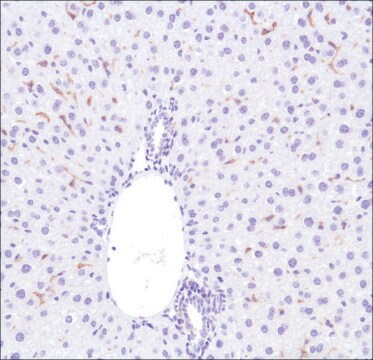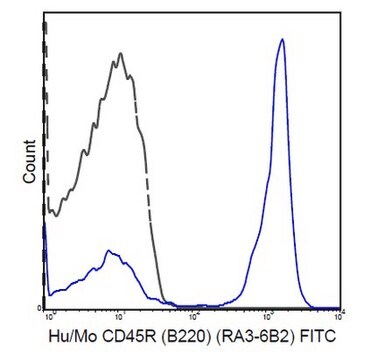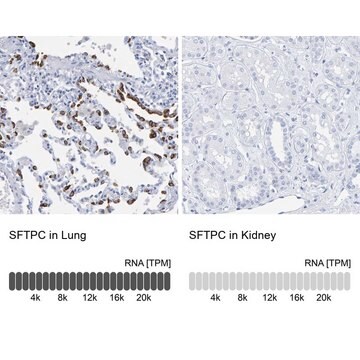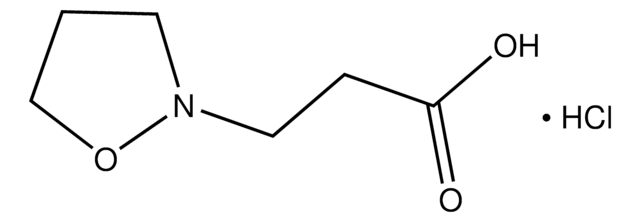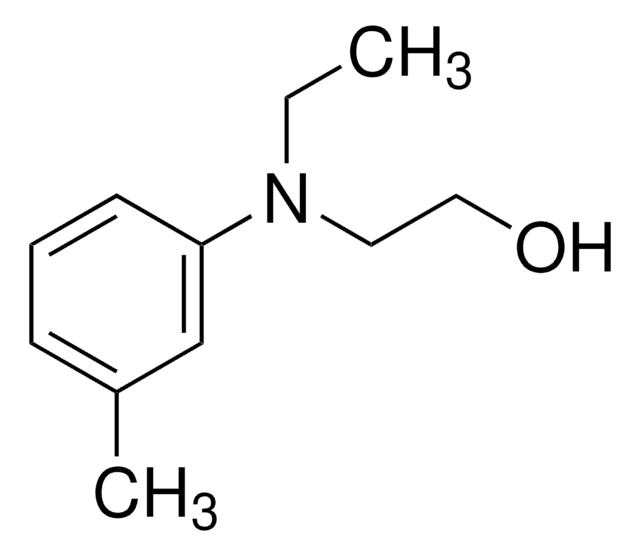MABF148D
Anti- CD161 (NK1.1) (mouse), APC, clone PK136 Antibody
clone PK136, from mouse, Allophycocyanin conjugate
Sinônimo(s):
Killer cell lectin-like receptor subfamily B member 1B allele A, CD161 antigen-like family member B, Lymphocyte antigen 55b (Ly-55b), NKR-P1 34, Natural killer cell surface protein NKR-P1B allele SJL/BALB (NKR-P1B), CD161b, CD161 (NK1.1)
About This Item
Produtos recomendados
fonte biológica
mouse
Nível de qualidade
conjugado
Allophycocyanin conjugate
forma do anticorpo
purified antibody
tipo de produto de anticorpo
primary antibodies
clone
PK136, monoclonal
reatividade de espécies
mouse
embalagem
antibody small pack of 25 μg
técnica(s)
flow cytometry: suitable
Isotipo
IgG2aκ
nº de adesão UniProt
modificação pós-traducional do alvo
unmodified
Informações sobre genes
mouse ... Klrb1C(17059)
Categorias relacionadas
Descrição geral
Imunogênio
Aplicação
Inflammation & Immunology
Immunoglobulins & Immunology
Qualidade
Flow Cytometry Analysis: 0.125 μg from a representative lot detected CD161 (NK1.1) in one million C57Bl/6 splenocytes stained with FITC Anti-mouse CD3e.
forma física
Armazenamento e estabilidade
Note: It is recommended to store the product undiluted at 2-8°C and protected from prolonged exposure to light. Do not freeze.
Outras notas
Exoneração de responsabilidade
Não está encontrando o produto certo?
Experimente o nosso Ferramenta de seleção de produtos.
Código de classe de armazenamento
12 - Non Combustible Liquids
Classe de risco de água (WGK)
nwg
Ponto de fulgor (°F)
Not applicable
Ponto de fulgor (°C)
Not applicable
Certificados de análise (COA)
Busque Certificados de análise (COA) digitando o Número do Lote do produto. Os números de lote e remessa podem ser encontrados no rótulo de um produto após a palavra “Lot” ou “Batch”.
Já possui este produto?
Encontre a documentação dos produtos que você adquiriu recentemente na biblioteca de documentos.
Nossa equipe de cientistas tem experiência em todas as áreas de pesquisa, incluindo Life Sciences, ciência de materiais, síntese química, cromatografia, química analítica e muitas outras.
Entre em contato com a assistência técnica
